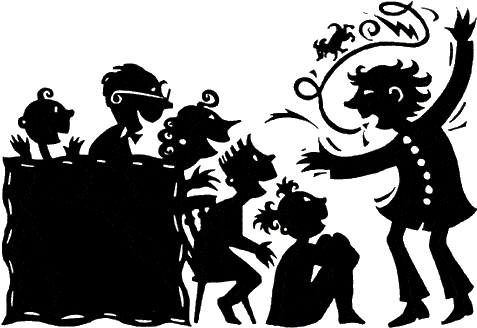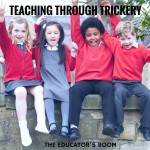Life is a series of stories. By definition, a story is a chain of events. In both formal and informal education, storytelling is an excellent teaching strategy. Think about it – teaching English, History, Reading, Science, Social Studies, Art and even Math can be enhanced by the use of stories. We’ve all told them, whether it be during the lesson or after work to our ever sympathetic friends and colleagues – but have you ever wondered what makes a story interesting?
I was watching a terrific but terrible Netflix movie a few weeks back. The lead character was a pastor talking about his sermons. He stated, “I could be discussing a recipe for banana bread. If I did it with enough conviction and finesse, everyone would be engaged.” No truer words could be spoken in a direct-to-Netflix movie. Storytelling is an art with nuances that need to be practiced and skills that need to be developed.
First, what makes a story? When I’m teaching Storytelling Basics to people from educators to archivists, I use a four-piece puzzle. The essential pieces are: Setting, Characters, Problem and Solution. Take any movie, any book and any historical event – you can fill out each one of the pieces. This idea can be utilized with objects too. A fossil, a sedimentary rock, a leaf – they all can be placed into the story puzzle. Each part is essential as well. Everything happens in a place, stories need characters, (whether they have conscious thoughts or not,) something has to go awry or not according to plan, and there has to be an ending. It doesn’t have to be a happily ever after solution – but to keep the story from going on forever, there has to be an ending that FEELS like an ending.
Once the story exists – edits and all – it’s time to think about how it’s being told. So often we spend hours thinking what to say. How much time do we put into thinking about how we say it? Delivery is a huge part of everything we do. Whenever two or more people are being addressed, it’s an audience. So think about your presentation. No matter how interesting you find the story, if you don’t tell it in an engaging manner, no one will listen. Rehearse – even if you write out the main points – run through your ideas. Practice what you will say, even if it’s once. Find places that you can utilize dramatic storytelling techniques, specifically tone, timbre and pacing.
Tone, timbre and pacing can make a good story great. First think about tone – find the emotion of the story. Are there words that matter? Is there a point to emphasize? Work through the story and see if there are moments you’d like to utilize to get the point across. Play with emphasis – stress different words in important sentences even if it seems they don’t make sense. This experiment might help you find moments that weren’t immediately apparent. The same can be done with timbre and pacing. Find places to bring your voice into a higher register – or a lower one. Read through parts very quickly, then very slowly. Always do this out loud so you can hear what it sounds like. Use a dramatic pause – and use it well. Too many pauses give the impression of self-consciousness. A pause cleverly placed is genius. When you discover that sweet spot, use the pause to make eye contact with your audience and build the anticipation and suspense. All of these techniques are best utilized first as experiments in the rehearsal process. So much of good teaching can be associated with performing – why not view it as such?
Finally, the element of interaction can capture even the youngest of audiences. If there is a sound, a repeating line, even a moment they can contribute to telling the story – that is what kicks the multimodal brains in gear because they are participating and teaching with you. It’s a bit harder for high-school students to make the sound of the trees in the wind, but asking questions like ‘what would you do’ and ‘do you agree with the choice that was made’ sparks conversation and debate – and ignites the same question you should be asking yourself before telling the story: who cares? Why does this matter and why are you telling this tale?
Growing up, we had adults telling stories to us. As adults, we’ve probably had the opportunity to tell stories to a child in some capacity. In my Storytelling Basics class, one of the participants said “I’ve told stories to my kids before and did all of this – why did I throw it all away when I started teaching with stories?” Don’t forget that element of fun and excitement of telling a story to a small child – infuse that same passion into the stories you tell to teach. And have fun with it. How have stories helped you teach?





Leave a comment